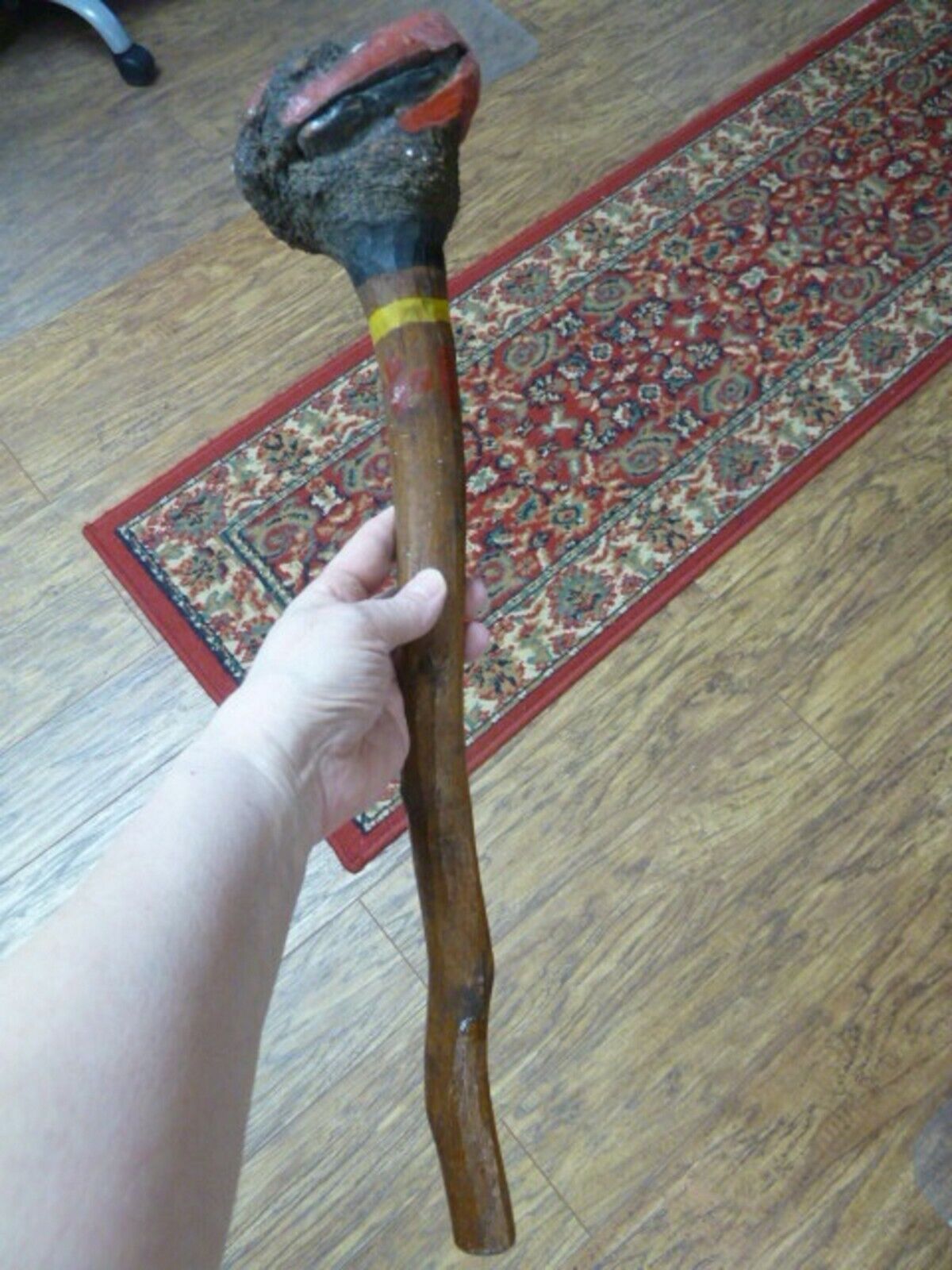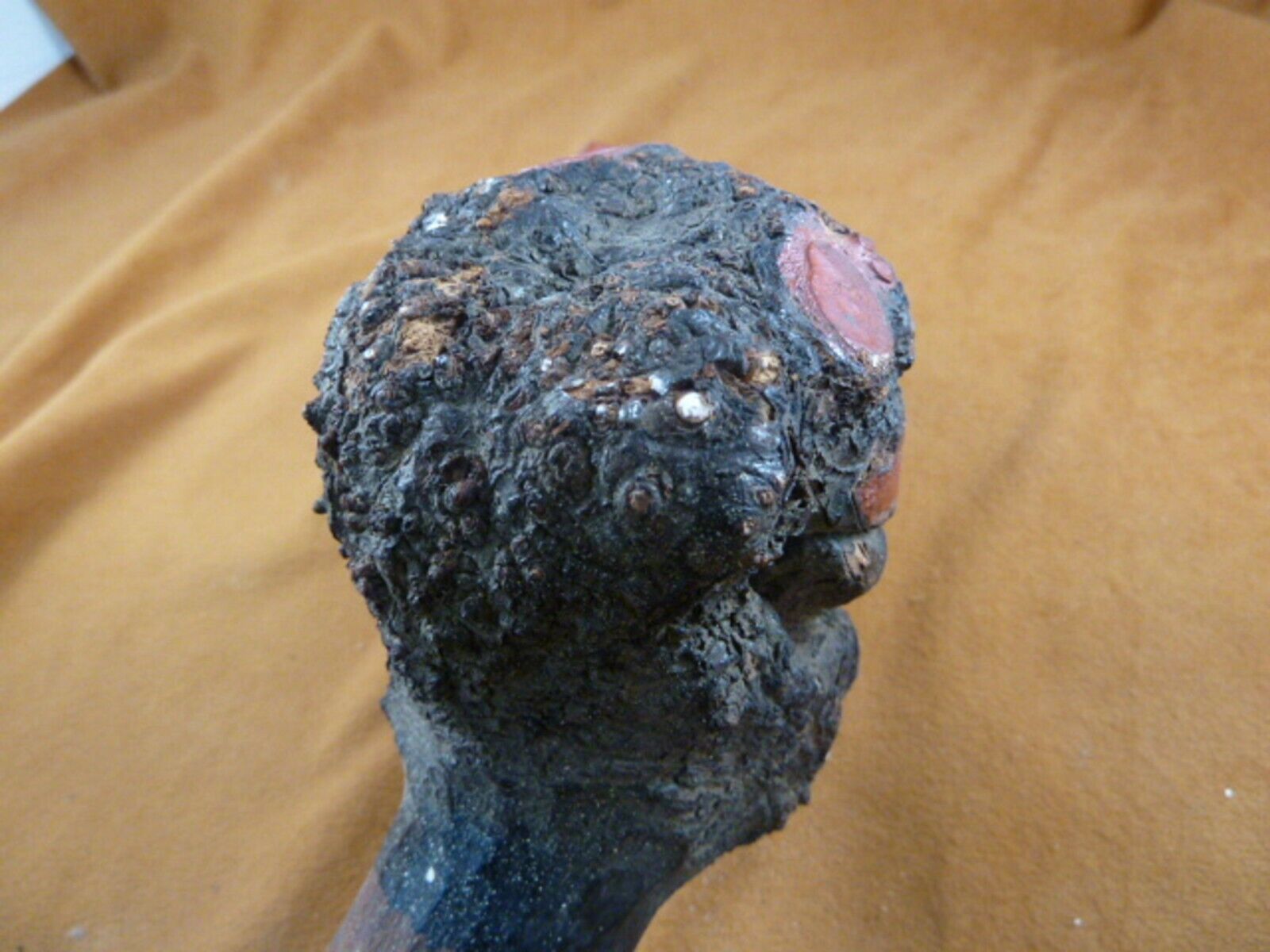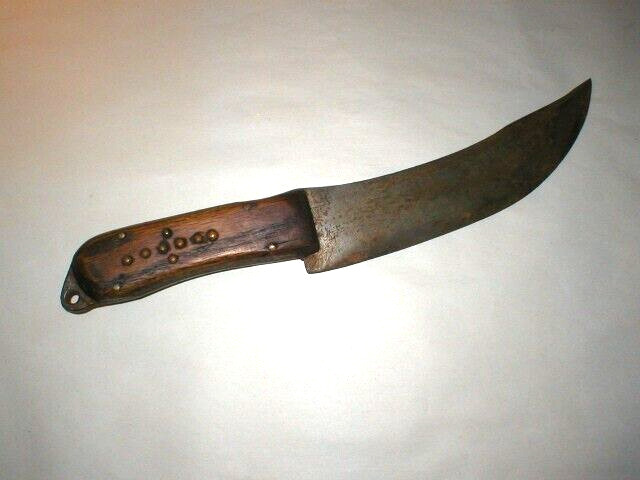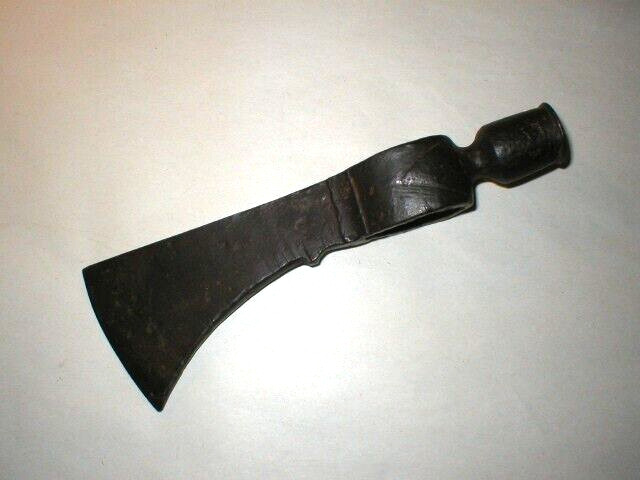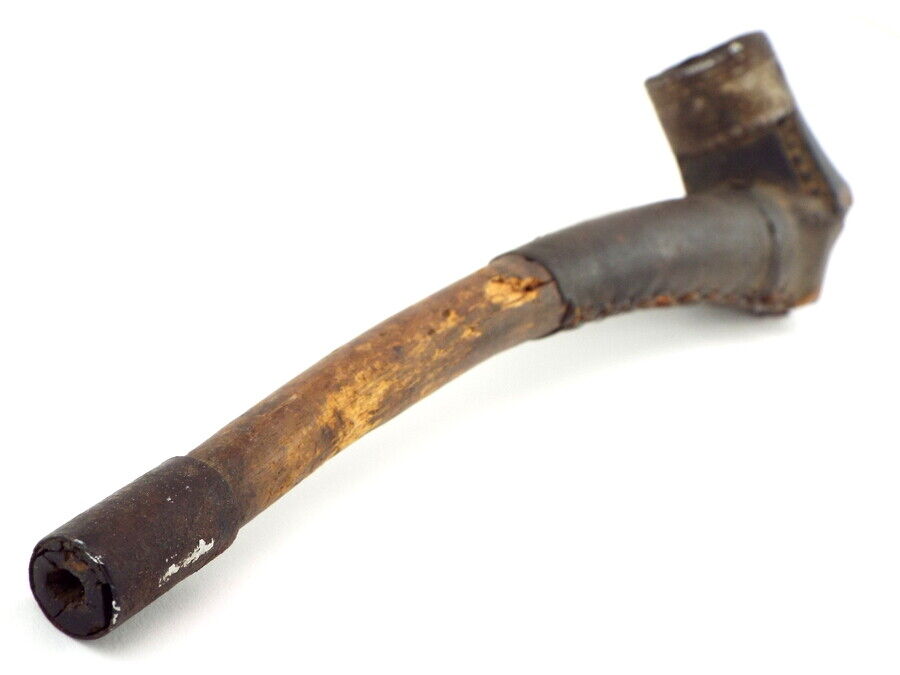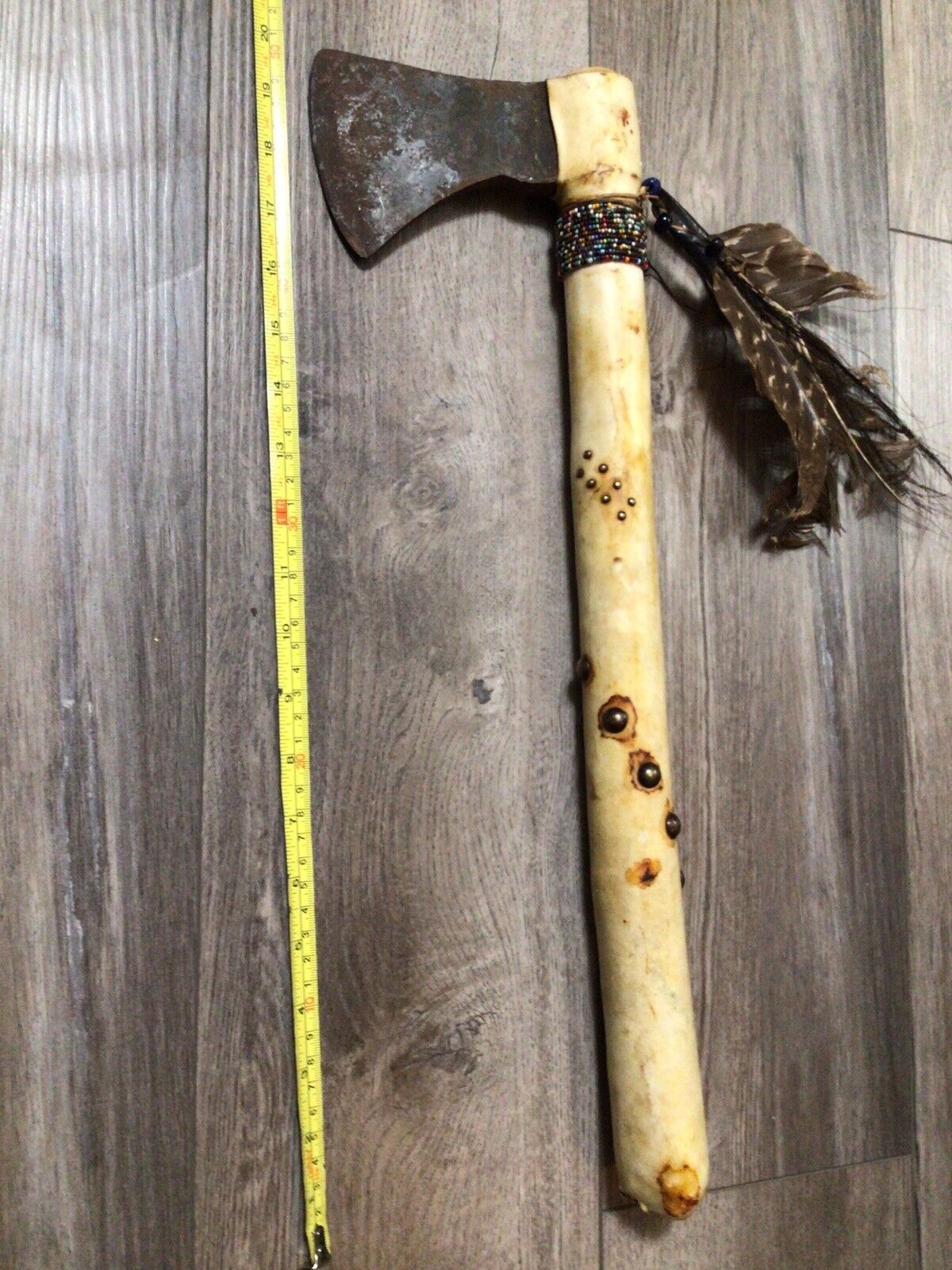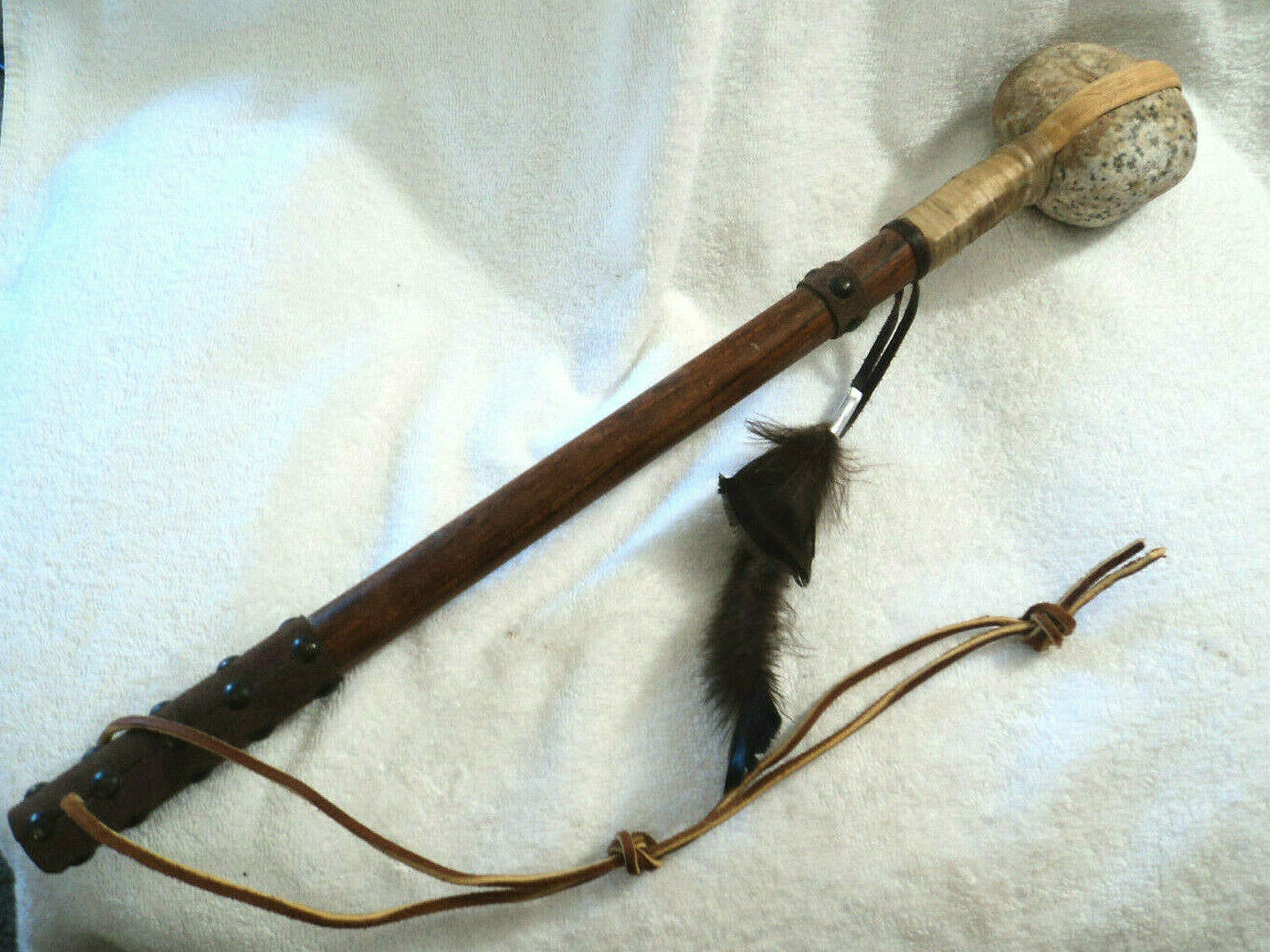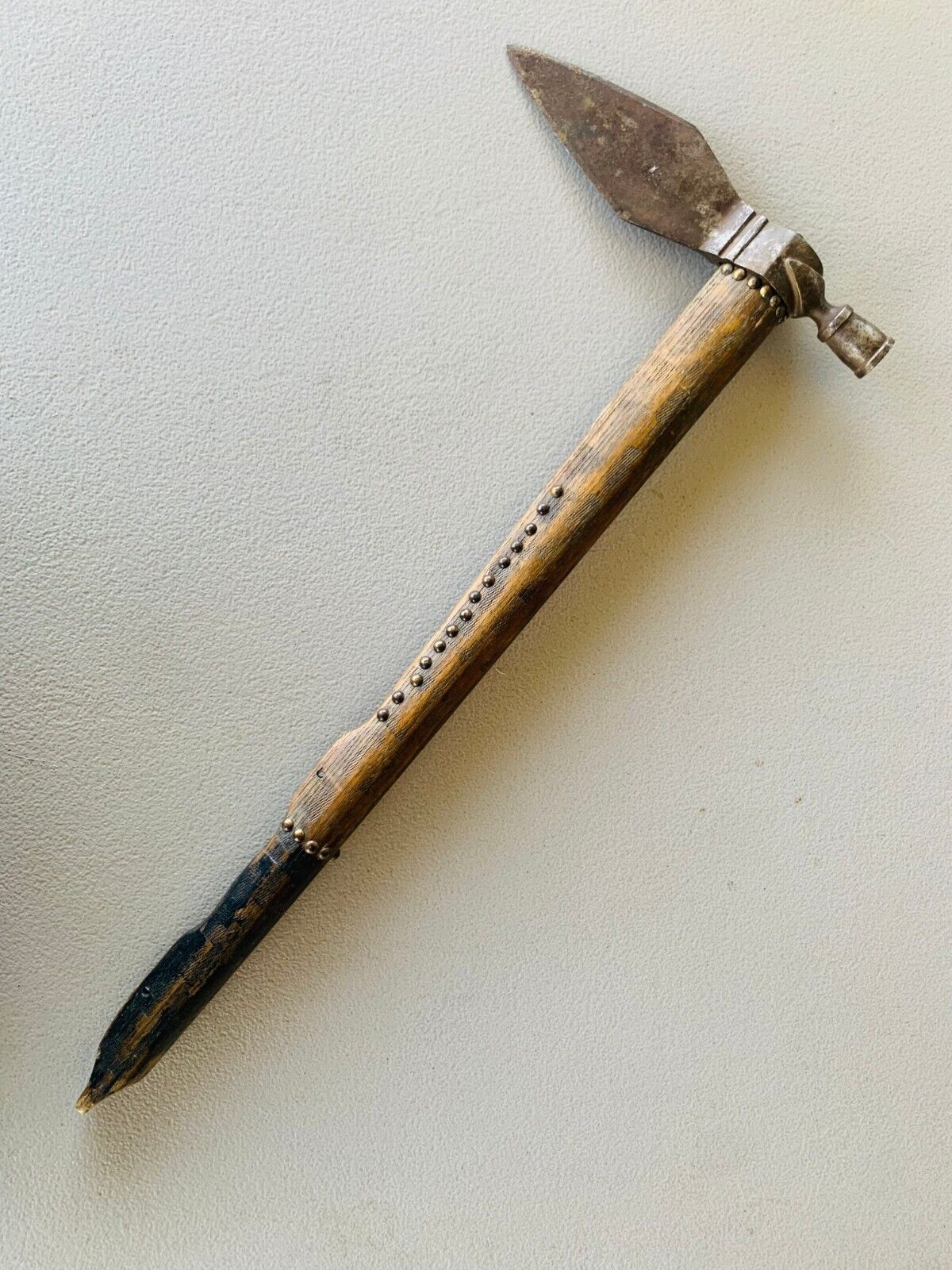-40%
CLUB-21 Genuine Penobscot Native American Root club war weapon ceremonial 1900's
$ 222.28
- Description
- Size Guide
Description
(internal #CLUB-21). Genuine antique PENOBSCOT Native American Root war or ceremonial club.This club is circa early 20th century.
Measures 22-1/4" long; root ball with point itself is 7" long; club diameter is 1-1/4". Bird beak with beak point painted red; black and yellow stripes around top of handle, red painted design below that; hewn marks on handle.
Weight: 1 pound
ROOT CLUBS
Background information from
PENOBSCOT NATION MUSEUM -
OLD TOWN, MAINE
Root Clubs were made from root bundles of immature gray birch trees (not war clubs, there was no word for war among this tribal nation) new & old. Short clubs used to finish off a kill on an injured animal, longer clubs made later to stave off soldiers that had spears as weapons. They believed they were releasing the spirits of animals & birds from the wood they were carving. The clubs were also carried in dances and religious ceremonies.
Penobscot Native people in Maine sold off some of their ancestor's clubs, then began making new ones, and re-purchasing the ancient ones, to preserve their Penobscot & Wabanaki cultures.
After digging up a small tree with most rootsintact, carvers trim and sometimes completely remove the bark of the sapling.The roots are sharpened and shaped into points, occasionally an animal orspirit will be carved on a root point. Human or spirit faces or animals arecarved in the root ball under the points, sometimes incorporating a root point.The stock of the small tree becomes the handle and is then decorated with smallcuts; "chip carving". While other cultures use chip carving todecorate wood, among Native Americans primarily the Penobscot but occasionallythe Maliseet, Abenaki and Passamaquoddy are the only tribal groups to utilizechip carving as a decorative technique. Penobscots have long been know for thebeauty of their chip carved items. Burnt work/pyrography is also used as adecorative technique on root clubs, Passamaquoddy root club makers morefrequently use burnt work on their clubs. The root balls are plainer inthe older root clubs, some carvings on early root clubs have a reddish vegetalstain, but no paint. Smaller root clubs are thought to have been shaman's clubsfor ceremonial use.
The traditional chip carving and designs onroot clubs are an ancient skill that was nearly lost. In the late 1880'scarvers discovered these could be sold as "tourist items" or"souvenirs". Maine Indian carvers of that era began incorporatingdesigns that sold; a combination of the traditional form but with moderntouches that appealed to the buyers . These modern changes included paintingthe handles and the face or animals carved in the root bundle and using PlainsIndian type headdresses on the faces that were traditionally carved on someroot clubs. Place and tribal names sometimes appeared on the handles - astourists liked mementos of where they had visited.
The root ends are carved into points thatmake it practical for use as a war club, but at the same time resemble either afeathered headdress, or, individually, the sort of peaked caps worn by some ofthe men and women of the Maine tribes. The Penobscot became part of theWabanaki Confederacy, an alliance of Native American people that included thePassamaquoddy, Micmac (Mi’kmaq), Abenaki, and Maliseet Indians, who occupiedMaine and parts of Canada. The name Wabanaki means “People of the First Light”or “People of the Dawnland,” referring to the fact that they lived where thesun rose on North America.
Root clubs have been viewed by museums andanthropologists as “tourist art,” not “traditional” enough to warrant a placein museums. Decades of research by exhibit curators Stan Neptune and JoanLester of the Abbe Museum have built the body of evidence to show that thisuniquely Wabanaki form, in fact, is very much a part of Wabanaki traditionsgoing back centuries or more. And while new styles have been created over theyears to support an economy tied to tourism, the earlier forms have continuedand are still being made today. Root clubs started as weapons, then becameceremonial tools as spirit clubs, then became tourist pieces. Increasingcomplexity in the use of ornamental design parallels the market that grew forthese objects.
WE SHIP WORLDWIDE, see the chart for postage to your country.
Click on our eBay Store tag for other WEIRD STUFF!
